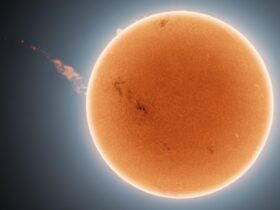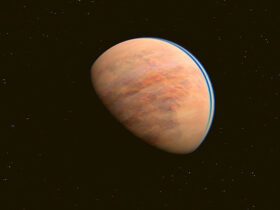A very little extraterrestrial world has recently been discovered circling the Solar System’s nearest star neighbor.
Proxima d is an exoplanet candidate that circles Proxima Centauri, a tiny, faint red dwarf star approximately 4.2 light-years away from the Sun. Surprisingly, this exoplanet is only a fourth of Earth’s mass. It’s one of the tiniest exoplanets ever discovered, and the tiniest ever discovered through measuring the exoplanet’s gravitational influence on its star.
It’s also the third exoplanet identified around Proxima Centauri, and while the newly discovered world isn’t livable, its identification shows that there’s a whole universe with exoplanets out there just beyond our present capabilities.
The radial velocity (or wobble) approach is one of the most widely utilized methods for finding exoplanets. When two bodies are gravitationally linked, such as a star and a planet, one does not orbit the other. Instead, they revolve around their common mass center.
The star ‘wobbles’ faintly on the spot as a result of this, generating a Doppler shift in the light reaching us. The wavelengths of the star’s light stretch out somewhat as it moves away from us; as it approaches closer, they compress. Astronomers can deduce the existence of an exoplanet by looking for those frequent Doppler changes.
Scientists used radial velocity measurements to establish the presence of Proxima b, it being an exoplanet with a mass of 1.2 times that of Earth orbiting the star approximately every 11.2 days.
In the data, however, there was also a much fainter signal. The researchers found that it was really an exoplanet. Proxima d is an exoplanet that orbits its sun once each 5.12 days and has a mass of at minimum 0.26 times that of Earth. Unfortunately, this indicates it’s too near to the sun to support life as we understand it.
The discovery shows that the lack of smaller exoplanets thus far is simply due to our inability to consistently identify them – and that discovering them will be a question of time and technology.
The findings were reported in the journal Astronomy & Astrophysics.













Leave a Reply